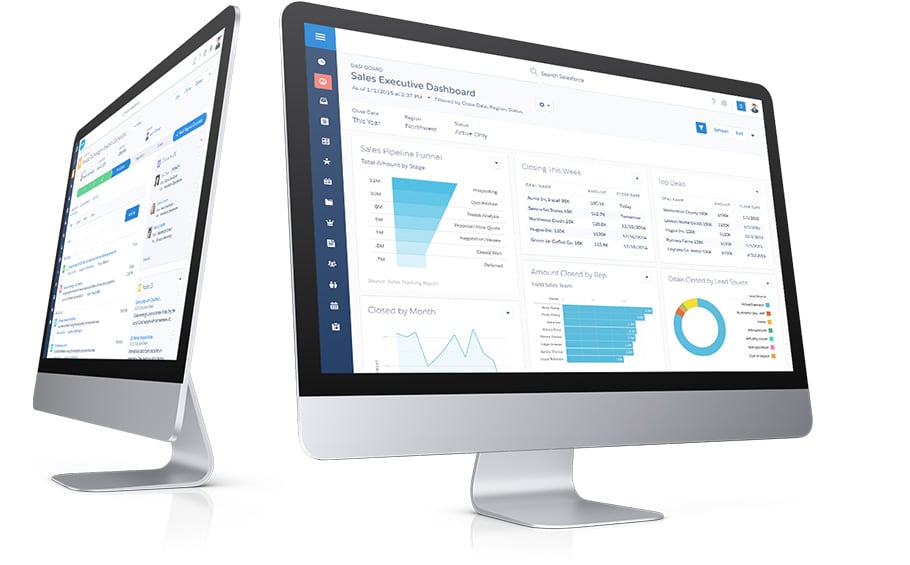

Some sales people have a natural adversity to using and benefiting from their CRM system.
We have many requests to train sales teams so that they will fully adopt their CRM system.
We discuss the reasons for poor sales adoption, the benefits that a good CRM system can deliver to Sales and outline a training programme to get Sales to want to adopt the system.
Why do some sales people not use their CRM system to maximum benefit?
CRM Purpose and Objectives
If sales do not understand the objectives that deployment of a CRM system was intended to achieve, they lack a conscious reason to use the system.
In essence a CRM system is a single source of Customer Knowledge and a platform for customer delight. How clearly has your organisation described the purpose and goals behind your CRM investment?
If this is clearly communicated, it places a subliminal obligation on the Sales person to use the system.
CRM should be the only source of performance data for all management layers.
If management use sales data from sources other than the CRM system, Sales know that they can avoid entering data into the CRM.
Best practice requires the leadership team to declare that “If the data is not in the CRM system, it never happened or it never will happen” and for them to be seen using the CRM management information.
The CRM system is not designed to map to your Sales Processes
Very frequently, CRM systems have not been configured to permit Sale people to enter and find the data they need for different sales scenarios.
The out of the box process and data flow does not reflect their working practices. Training Sales on effective use of your CRM system can only be really effective if the configured system has taken account of the sales team’s needs.
“It takes too much of my time entering all this data”
If the person has never had to record any information before the introduction of a CRM system, this rare individual may have a valid point but a short prognosis of future employment.
It may be that he / she is really complaining that:
- They can’t enter data any time anywhere so they first write it down and then transcribe it into the system
- Too much data is required
- They are not comfortable with computing
- Their sales skills are far higher than their writing skills
A Cloud CRM system which is fully mobilised offers the fastest way to enter data so people need effective training on the mobile application.
The CRM System should be configured to only show the Sales person those fields that he/ she needs to use.
A powerful antidote to low computing or literacy skills is to use a voice to text mobile application, a transcription service, or to enable the user to upload voice files to the CRM record.
“Knowledge is power”
Some sales people are reluctant to share customer information as they feel it maintains their position as the ‘Fount of Knowledge’, or exposes them to competition or secures their indispensability.
It is easy to establish data privacy between sales people or sales teams, if required, in most CRM systems. Sales training should include time to explain the CRM data security model.
CRM applications such as Salesforce Chatter, provide an excellent platform for individuals to be visible knowledge contributors.
What are the benefits of CRM to Sales?
The source of warm leads and new deals
Your CRM system should be delivering a continual source of qualified leads to your Sales team or at least a data repository of suspects that they can mine for opportunities.
If your marketing automation applications are fully integrated with your CRM system, Sales can be instantly alerted to new leads that have been scored as ‘Ready for Sale’, or ‘Ready to buy’.
The sales person can immediately see what information the prospect has been exploring or downloading or discussing in Social media prior to making the first call. By using the links to the social media platforms from the lead record, you can arm yourself with the career history and social media interests of the prospect.
An Aide Memoire
For those not blessed with perfect recall, your CRM system will remind you to complete important actions and gives you instant access to the information you need prior to any customer call. Invariably it is useful to use the CRM data and correspondence records to remind the customer what they said or committed to.
Rapid Search and Retrieval of Information
Global Search of your CRM system saves huge amounts of time to assemble relevant information about a customer
A Tool to Prioritise and Organise Work
Sales outcomes are determined by the successful execution of an activity plan. By logging activities in the CRM system, the system can tell you how you need to correct your work activity to achieve or exceed your goals.
Easy to use list views or reports allows you to prioritise anything.
Route planning applications shows a geographical distribution of prospect or customer locations.
A Closed Deal Accelerator
Having all the CRM information at your fingertips on a mobile device, means you can spot threats to a potential deal. Are there any outstanding customer service problems, or overdue payments?
The facility to automatically generate quotes or order forms with one click and obtain electronic signature from the client means you don’t have to get back to the office to get a deal signed.
Track Communication Effectiveness
All Email communication should be logged against the contact, account and where relevant, the opportunity record. This is easily achieved by using the native email tools inside your CRM or by integration with Outlook or your chosen email server. You can identify which emails have been opened or read by your prospect / customer and make the call to get them to read the proposal you sent last week.
Time taken to email a customer is dramatically reduced by using editable email templates, or emails triggered by workflow.
Collaboration with Colleagues
Collaboration environments such as Chatter, enables Sales to ask colleagues to provide instant help, suggestions or advice on a deal. Or sales can learn from the best members of their team by ‘following’ how their deals are progressing.
Salesforce offers a neat feature which allows a salesperson to find examples of other deals which have similar characteristics as the one they are working on. They can find out what worked in these other deals or recruit help from their colleague who won it.
Less Credit Control Effort
If your CRM system is integrated with your finance system, then Sales has immediate visibility of a customers credit risk and the credit control department has all the information they need to secure payment without interrupting sales.
Reduce Time for Account Reviews
CRM systems offer real-time performance data for sales people and their managers. Time to prepare data or presentations for the sales reviews is reduced to a click of a button. Sales Forecasts based on the opportunity records are always available at the click of a button.
Real Time Personal Performance Data
Sales should have instant dashboard visibility of their performance versus target, and if required their relative performance against their peers. The system can be also configured to show actual and forecast commission earnings which appeals to the primary instincts. For those sales people who are members of an account team, they get immediate notification of any change or development of a future deal.
Content on Demand
Any documents or presentations to support a sale are immediately available in content libraries reducing or eliminating effort in assembling and preparing information packs. Better still, you can see if the prospect has looked at the content.
Eliminate Paperwork
A well configured CRM solution should eliminate the need to manage paperwork or use spreadsheets.
CRM training for Sales
A CRM training agenda for Sales should be designed around the sales processes that you want to be adopted and the Sales productivity features that you have invested in.
A suggested agenda is given below:
1.CRM Training Goals and Objectives: This should be opened by an executive leader who can explain why this training is required, what the companies CRM goals are, and the importance the leadership team attaches to the effective use of the system
2.How to capture and qualify new leads. Understand what intelligence about the lead is available in the system
3.How to access Social media pages used by the lead or contact
4.How to log calls or activities, send emails, use email templates, sync emails between your CRM and email system, track opened emails
5.How to use voice to text or transcription services
6.How to mass email contacts
7.How to arrange meetings for one or more attendees and log meeting outcomes
8.How to create and manage new deals, renewal orders
9.How to sync files to the CRM records
10.How to use Content on demand to support a sale
11.How to find Similar Opportunities
12.How to use the collaboration tools
13.How to create list views to see tasks to be completed, prioritised sets of data,
14.How to Create quotations, proposals
15.How to have documents electronically signed
16.How to manage forecasts
17.How to create and use reports and dashboards
18.How to use Mobile CRM
19.How the System could be improved.
by Mark Riley,BSc, PhD
Director
Xenogenix

 The project sponsor makes sure that the project is aligned with the strategic goals of the organisation. The sponsor shapes and approves the project brief which sets the direction for the project, defining what should be accomplished, how much risk the organisation is willing to tolerate, and what limitation will be placed on the project (deadline, staff effort limit, spending limit, other constraints).
The project sponsor makes sure that the project is aligned with the strategic goals of the organisation. The sponsor shapes and approves the project brief which sets the direction for the project, defining what should be accomplished, how much risk the organisation is willing to tolerate, and what limitation will be placed on the project (deadline, staff effort limit, spending limit, other constraints).

